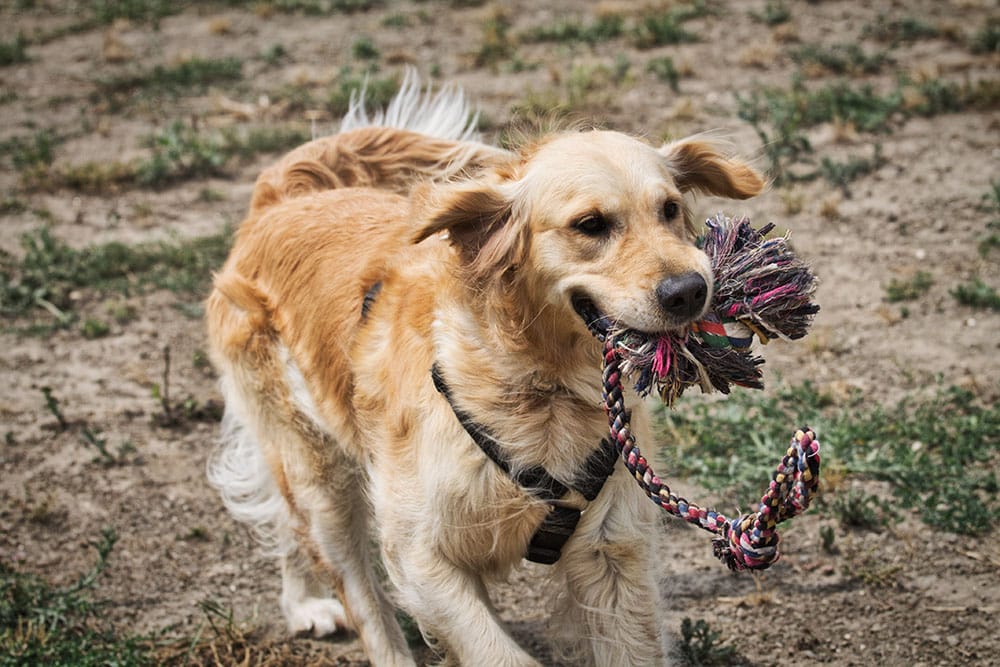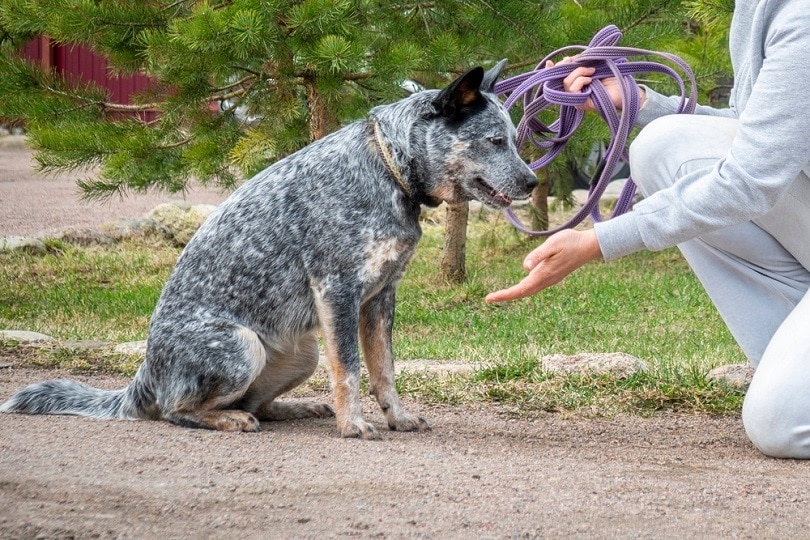How to Teach a Dog to “Drop It” in 5 Simple Steps
Updated on

Training your dog to obey a release command like “drop it” is important for many reasons. It is useful for fun games like fetch or tug of war, but it can also be used to keep your dog safe. Dogs like to pick up and eat things that aren’t good for them. Having a release cue means you can ask your dog to let go of the item.
The cue “drop it” can be trained in a few simple steps. For most dogs, you can teach this cue in a few minutes, but for others, it can take more time. If your dog is easily distracted, be patient and consistent. Keep training the cue daily until they get it. The steps included in this guide involve positive reinforcement training techniques and do not punish your dog for not following the cue.
Before You Start
The key to using positive reinforcement training for your dog is to find their “currency.” What this means is figuring out what reward is the most motivating for them. For some dogs, this is a food reward; for others, it’s a favorite toy or affection and praise.
Whichever reward works to motivate your dog is appropriate to use for this training. In this step-by-step guide, you are instructed to use a treat to offer your dog, but you can easily replace this with a toy or petting if you desire.
Also used is the verbal cue of “drop it,” but you can train your dog with any word that you choose. If you prefer “give” or “release,” that’s fine, just be consistent. The training and the action are the same. Your dog will learn whatever cue you train them to use.
Step-by-Step Guide to Teaching Your Dog to “Drop it”
1. Start with a favorite toy

Start your training session by offering your dog one of their favorite toys. Give it to them. If your dog gets overly excited by the toy, you may let them play for a few minutes before you start training; just don’t wait so long that your dog loses interest in the toy.
2. Swap out the toy for a treat
Hold a treat up to your dog’s nose while they have the toy in their mouth. The second that your dog releases the toy, give the treat. Repeat this several times, so your dog learns to associate letting go of the toy with getting a treat.
3. Add the verbal cue

Add your verbal cue of choice, like “drop it.” Say it firmly and clearly while holding a treat close to your dog’s nose. Over time, hold the treat farther away, and gradually increase the distance for as long as your dog is responding to the verbal cue.
If your dog stops responding to the cue at a distance, move closer and continue working on it. Try the cue intermittently without a treat, and replace the treat with praise. It can work best to occasionally treat your dog with the cue over time to reinforce good behavior.
4. Drop it and leave it
Once your dog understands the “drop it” cue, the next step is to get them to “leave it.” Do not punish your dog if they pick up the dropped item immediately after. Use a “leave it” command, and give a treat when your dog leaves the dropped item alone.
“Leave it” is a harder command for some dogs to understand. You may have to be extra patient, but with consistency and persistence, your dog will eventually learn it.
5. Proof the behavior

Continue regularly training the “drop it” and “leave it” commands, changing what item your dog is supposed to drop and leave. When your dog can leave their favorite toy on command, you’ll know that they’ve mastered the command.
Problems With Teaching “Drop it”
We, as owners, engage in certain instinctive behaviors that can cause problems with teaching the “drop it” command. It’s important not to pull a toy from your dog’s mouth, grab their head, or try to pry open their jaws. Doing this sends your dog the wrong message, and it can end badly. At best, your dog sees your actions as a game and will try to play tug of war with you. But they can also read it as a punishment for holding the item. There is a good chance that you will get bitten in the process.
If your dog has something harmful in their mouth and they haven’t yet mastered the “drop it” command, the best thing to do is dump a handful of treats in front of them. This will encourage them to let go of what they have to eat the treats. However this is an emergency situation resource only, if you abuse this method your dog will keep putting all sorts of random things in its mouth.
Another common training error is choosing a command that resembles a different command that the dog already knows. “Drop” and “stop,” for example, rhyme. Using both commands is likely to confuse the dog. If your dog already knows the word “stop,” you may want to train the “drop it” command using the word “give” instead.
Final Thoughts
Teaching your dog the “drop it” cue can be fun and easy. This cue is important to teach your dog, as there may be times that you need them to drop something in their mouth for their safety. It will also make games like fetch more fun when your dog actually gives you back the ball! Remember to keep training sessions short and positive. Dogs learn best when they are rewarded for good behavior, as they want to please their owners. Some dogs take longer than others to learn new things, but patience and persistence will pay off in the long term.
See also:
Featured Image Credit: Alessandro Ceracchi, Pexels













